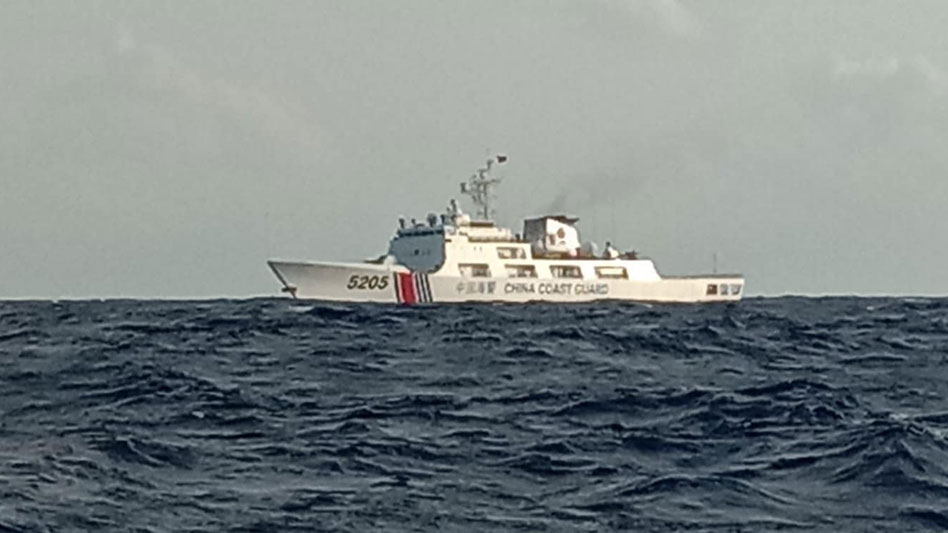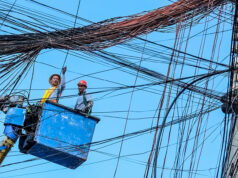Philippines told to work with sectors to fight China fake news, ambitions

By Kyle Aristophere T. Atienza, Reporter
THE PHILIPPINES should work with local sectors and other nations in countering China’s disinformation campaign and put in check its military and economic ambitions in the South China Sea, geopolitical analysts said.
The Philippines has been subjected to China’s disinformation tactics through “diplomatic slurs, media projection and people-to-people networks at the national and local levels,” Joshua Bernard B. Espeña, a resident fellow at the International Development & Security Cooperation in Manila, said in an e-mail at the weekend.
He added that the Philippines started to become highly vulnerable to China’s disinformation campaign under the government of ex-President Rodrigo R. Duterte, who led a foreign policy pivot to Beijing when he took office in 2016 in exchange for investment pledges, few of which materialized.
“Duterte’s rebuke of his predecessor’s foreign policy, Washington’s incapable and destabilizing regional presence, and China’s ‘peaceful rise’ to unite people for development and prosperity had blurred the need to take action to defend claims in the West Philippine Sea,” he added, referring to areas of the sea within the country’s exclusive economic zone.
In a Sept. 28 report, the US State Department said the Chinese government has allocated huge resources for its disinformation and censorship tactics to support its maritime ambitions.
China has spent billions of dollars annually on “foreign information manipulation efforts” and uses “false or biased information to promote positive views” of itself and the Chinese Communist Party (CCP), it added.
China suppresses critical information that contradicts its views on issues involving the South China Sea, Taiwan, human rights practices and its domestic economy, according to the US report.
The Chinese Embassy in Manila did not immediately reply to to a Viber message seeking comment.
Tensions between the Philippines and China have escalated, with Beijing conducting activities that deny Philippine vessels of their access to parts of South China Sea that fall within Manila’s 200-nautical mile exclusive economic zone.
A United Nations-backed arbitral tribunal in The Hague in 2016 voided China’s claim to more than 80% of the South China Sea based on a 1940s map.
China on numerous occasions blocked Philippine vessels from delivering food and other supplies to a World War II-era ship that Manila deliberately grounded at Second Thomas Shoal in the 1990s to assert its claim.
China in August said the Philippines had pledged to remove the grounded ship from the shoal, which is about 200 kilometers from the Philippine island of Palawan and more than 1,000 kilometers from China’s nearest major landmass, Hainan Island.
Mr. Marcos has said he’s “not aware of any such arrangement or agreement.” If there exists such an agreement, “I rescind that agreement now.”
Mr. Espeña said the Chinese Foreign Ministry, state media and pro-Beijing academics and think tanks had accused the Philippines of violating the status quo when it removed a floating barrier installed by China at Scarborough Shoal last month.
“This narrative is in conjunction with Beijing’s 2019 National Defense White Paper that the Asia-Pacific region is generally stable,” he said. “But this is too deceptive,” he added, noting that China had reneged on a deal with the Philippines in 2012 to pull its vessels out of Scarborough Shoal after a standoff there.
‘GEOPOLITICAL ENDS’
In the report, the US State Department said China seeks to cultivate and uphold a “global incentive structure” that encourages foreign governments, elites, journalists and civil society to accept its side of the story and avoid criticizing its conduct.
“The PRC’s approach to information manipulation includes leveraging propaganda and censorship, promoting digital authoritarianism, exploiting international organizations and bilateral partnerships, pairing cooptation and pressure, and exercising control of Chinese-language media,” it said.
“Collectively, these five elements could enable Beijing to reshape the global information environment along multiple axes”
Don Mclain Gill, who teaches international studies at De La Salle University in Manila, said disinformation from authoritarian countries like China could easily exploit the intellectual fabric of democratic societies like the Philippines due to their free press.
“It is equally difficult to target authoritarian countries with such means due to their controlled media,” he said via Messenger chat.
China’s ability to project influence in critical geographic areas “rests on altering the status quo in its favor without the overt use of military force,” Mr. Gill said. “Bejing is a calculative power. China has often invested in nonmilitary means for geopolitical ends.”
Mr. Espeña said some Philippine politicians, businesses and think tanks and social media influencers have allowed themselves to be used by China in its propaganda “due to lack of nuancing on national security and financial pull factors.”
Thanks to China’s “increased aggressiveness,” more and more Filipinos including the elites are now “much somber on the need for a sophisticated response and unified narrative for counter-information warfare.”
Amid China’s disinformation efforts in response to growing discontent among Filipinos, Philippine sectors need a “more coordinated approach,” Mr. Espeña said.
“The government should take the lead in agenda-setting while academia, think tanks, business communities, media and nongovernment organizations should provide a niche input for this effort,” he said.
Mr. Gill urged the government to promote “professional journalism” and “encourage transparent, consistent, and efficient reporting on critical issues” involving the South China Sea.
The government should also encourage technology companies to invest in technology “that can track fake news and help users identify it via algorithms and even crowdsourcing,” he added.



